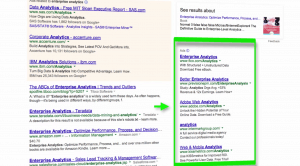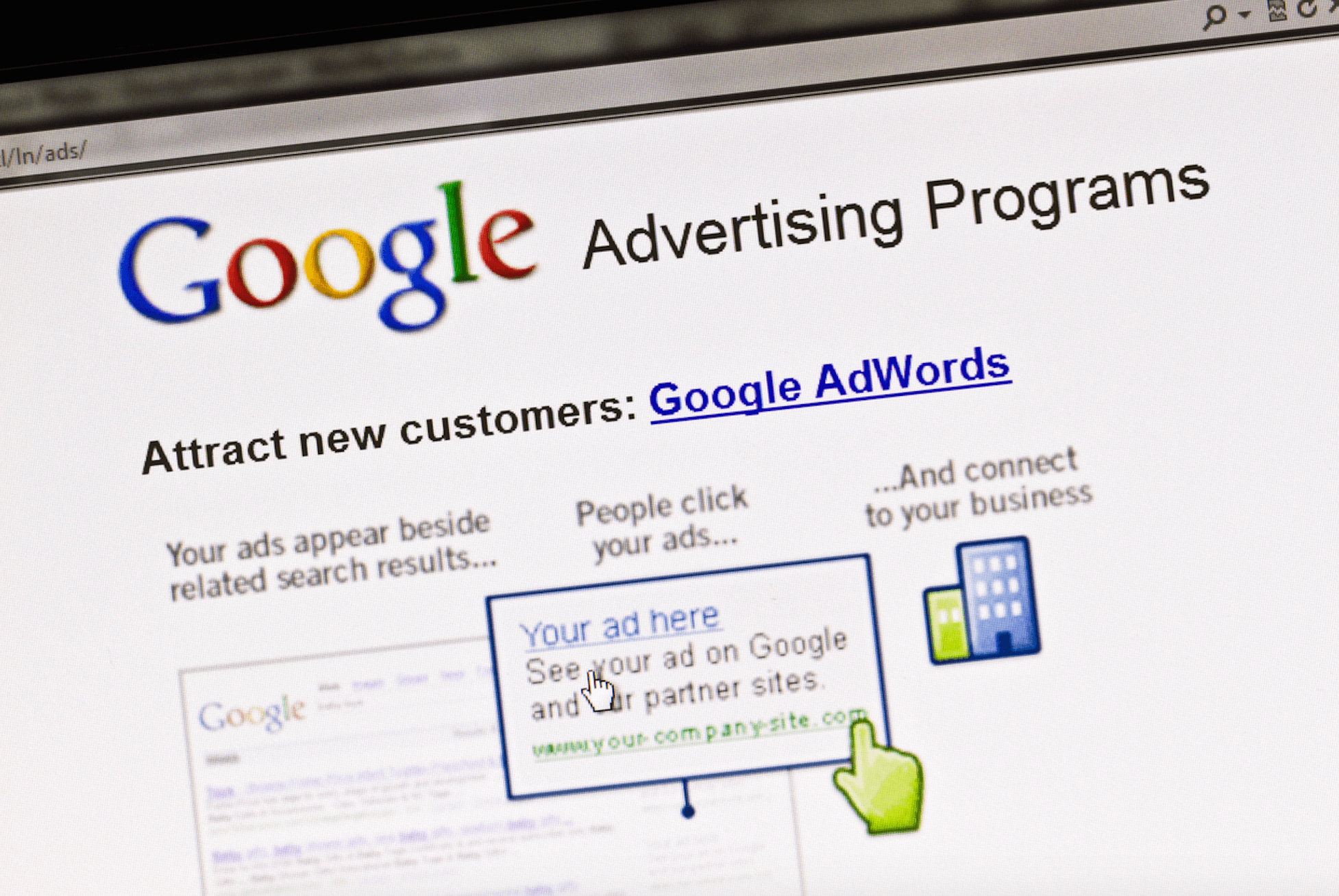In January of 2017, it had been calculated that Google had reached over 30 trillion pages. With terabytes upon terabytes of information being stored on its servers, burgeoning businesses have been forced to face the increasingly difficult issue of standing out in Google’s ridiculously large store of information. In order to remedy this, Google has offered a few ways to curtail this problem, one of which being the implementation of Google Adwords.
In essence, Google Adwords is an advertising service. It allows customers to bid on certain keywords in order for their clickable ads to appear in Google’s search results. It is one of the key ways in which businesses circumvent the issue of information inundation on Google servers, and peripherally one of the key ways in which Google makes its money.
However, even this potential shortcut has been flooded with a confluence of competition from other businesses. Millions are using the service; so standing out has again become a difficult task. Here are 5 ways in which you can use Google Adwords effectively, and extricate yourself from the multitude who use this method and still manage to fade into insignificance.
- Selecting the Correct Phrase Match
When beginning Google Adword campaigns, you are first tasked with choosing from 3 types of ad keyword phrases. The first is a broad match in which your ad will be displayed in any search which contains certain keywords, regardless of their order or even if they are part of another sentence. The second is phrase match in which the ad will display only if keywords are typed in a specific order, but the words can be part of a larger sentence. Finally is exact match, in which only keywords in an exact order will display your ad.
A common mistake users of Google Adwords make is that they are initially drawn to a broad match in order to make the most impressions as possible. While this can be a successful strategy, the issue with going to broad match too soon is the potential to suffer from a low conversion rate. Because the net cast is so wide, many potential customers that stumble onto your website are likely to be apathetic to its content. The more optimised approach is to start with an exact or phrase match, and slowly alter the keywords used to see what combination has the highest conversion rate. Once you have landed on a collection of words that have been optimised, it is then intelligent to move on to a broad match.
- Use Negative Keywords
Negative keywords are defined as words that, if typed in, will purposefully exclude your ad from appearing. It may seem counterintuitive to deliberately narrow your market, but the principle of precision that underscores the previous point is at play here too.
Negative keywords help ensure that ads become streamlined, being more likely to appear on relevant search pages. This has the direct effect of providing higher quality traffic to your website’s landing page, and consequently improving your Google Adwords quality score.
Starting use of negative keywords can seem daunting, as you have the broad swath of the English language to choose from. This can be mitigated by using a few methods to narrow these words down. To begin with, Google analytics provides its customers with reports detailing search terms that generated the lowest number conversion rates and impressions. Google also provides suggested negative keywords through its opportunities tab, which have a high degree of analytic accuracy.
It is also important to understand the impact your business model places on your negative keywords. If your business opts for a specialised model, a more voluminous approach to negative keywords would be preferable. On the other hand, if your business sports a wide array of products, though negative keywords are still necessary, they should be used a little more sparingly.
- Testing Your Optimal Ad Position
When Adwords appear on a Google page, ads can appear as the first few terms on the left side of the screen (the conventional side for search results) or the right side. To determine the ideal position for the Adwords, you must first decide what your company is seeking to achieve.
If your overall goal in your Adwords campaign is to maximise branding, then best position are spots 1 and 2 on the left side of the screen. However, if you instead seek higher conversion rates, it may be more lucrative to opt for positions on the right side of the screen. Part of the reason for this is that users are trained to look at the left side of the screen from the top down when using Google. Therefore, it goes against an individual’s nature to look at the right side of the screen, and a person is only likely to do so if they can’t find exactly what they are looking for. Users who look and click on Adwords on the right side of the screen both know what they want, and believe those ads they click on have something the other potential websites don’t.
It is difficult to determine exactly what is fitting for a campaign before it is implemented, so as with most of the aforementioned suggestions, it is important to first test your position. Start with a sidebar Adword campaign, and compare its results relative to a campaign that shows it in the first few search terms.

- Advertising Your Own Brand
One of the quirks of Google Adwords is that a search term for a company name can result in said company appearing first organically, but still fail to have ads ranked above its own placement. This is due to the company in question not running paid ads for its own brand name.
For example, let’s say Target was not running paid ads for its own brand name “Target”, but K-mart was. If an individual were then to type in the keyword “Target” into Google, they would see a paid K-mart ad before they saw the organic result for Target. The remedy for this is fortunately simple, as companies merely need to run paid ads for their own brand names in order to avoid the potential diversion of business from their own ad to another company.
- Split Testing
Split testing is the act of using 2 different Google Adwords for the same product. The purpose of this technique is to allow for internal competition to see which ad provides the best results. After the results are analysed through Google analytics, the inferior one is deleted, and a new ad is tested against the superior Adword.
There is a little more to this concept however. For starters, clickthrough rates should not be used as an appropriate barometer for the success of one ad over another. At the same time, conversion rates isolated are also a misleading tool to judge success, as one ad may have a dismal conversion rate, but when traffic generated through it is taken into account, it may bring in more paying clients. The success of split testing should adhere to the following equation; Adword Success = conversion rate x clickthroughs. When the value of this equation is maximised, then the ad is optimised.
The advantage of this measure is that it provides selection pressures for bad ideas. Google Adwords should undergo constant evolution and refinement in order to maximally appeal to their potential consumers, otherwise the campaigns threaten to fall into stagnation, and as the market and search terms changes, so does the relevance of your Adwords.
Beta Testing
The common thread that can be linked to each suggestion is that of testing and altering. You are very unlikely to land on the perfected Adword campaign instantaneously. Adwords are a matter of careful experimentation, comprehensive analysis of the results and changes appropriate for those results. It is a process that is never “over”, but if done correctly, can produce extraordinarily profitable results.




